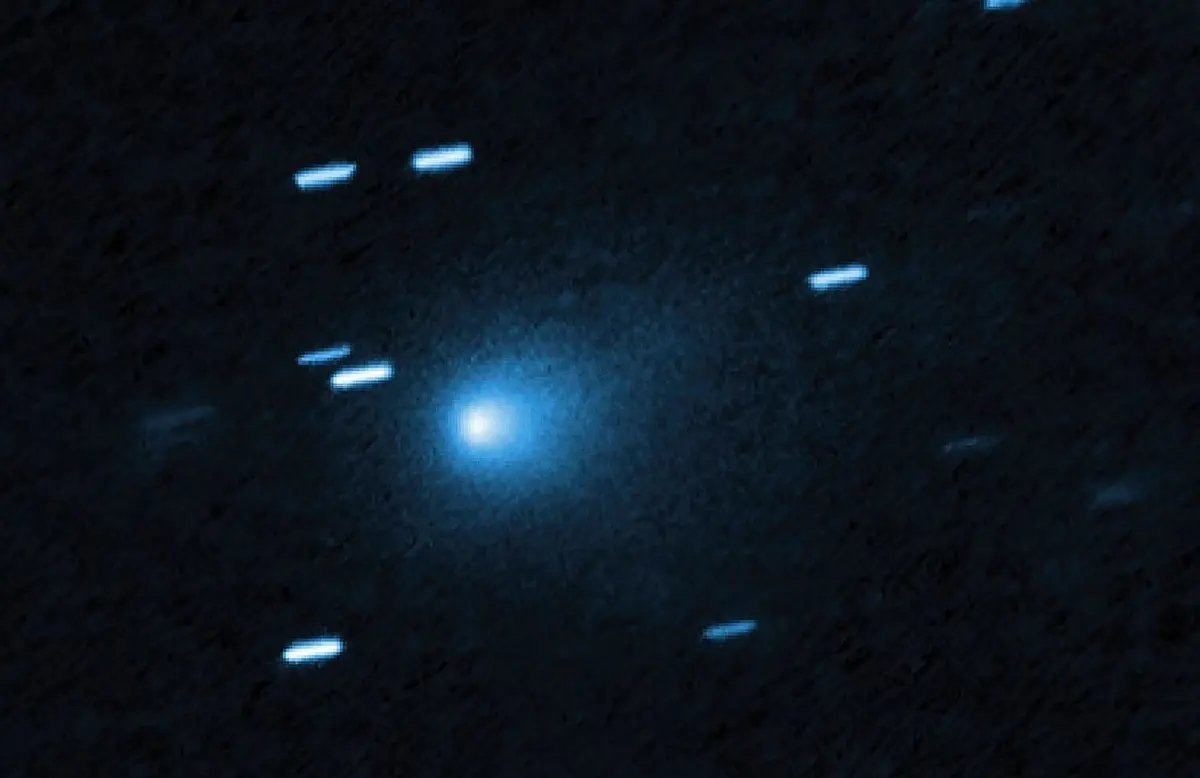Comets like 3I/ATLAS could jump-start the birth of giant planets around distant stars
-
 Comet 3I/ATLAS (Image via NASA)
Comet 3I/ATLAS (Image via NASA)Recent research indicates that interstellar comets, such as 3I/ATLAS, may play a key role in the formation of giant planets around massive stars, according to the BBC.
These objects, originating from outside our solar system, could act as initial seeds for planet formation, potentially addressing questions that current planet formation theories have not fully resolved.
Interstellar objects may help explain how large planets, including Jupiter-sized worlds, can form around stars similar to our Sun.
Scientists are studying these rare visitors to understand their potential influence on planetary systems in other parts of the Galaxy.
Interstellar comets like 3I/ATLAS are potential seeds for giant planet formation
Interstellar objects explained
Comet 3I/ATLAS is currently passing through the Solar System, having originated from another region of the galaxy.
Unlike comets formed within the solar system, which orbit the Sun, 3I/ATLAS will eventually leave the solar system permanently.
Only three interstellar objects have been observed so far: 1I/ʻOumuamua, 2I/Borisov, and 3I/ATLAS.
These objects offer opportunities to study primordial materials from other star systems and provide information about the conditions and ingredients present in planet-forming regions around distant stars.
Planet formation challenges
The information about planets surrounding youthful stars is a result of the development in a leftover nebulous gas and dust disk after a star's birth.
Small particles gradually glue together and attract more material until planets become the star's orbiting companions.
This is how planets in the solar system have been formed, but scientists point out a problem of how things bigger than one meter can be made in these turbulent disks.
In most cases, when boulders collide, it is a bounce or fragmentation that happens, thus growth by normal accretion is limited.
This issue has prompted scientists to explore alternative mechanisms for forming large planets around young stars, as per the BBC.
Interstellar comets as seeds
One proposed mechanism is that interstellar objects like 3I/ATLAS could provide pre-formed material for planet formation.
Professor Susanne Pfalzner of Forschungszentrum Jülich in Germany noted that computer models suggest young stars could capture millions of interstellar objects of the size of 1I/ʻOumuamua, the first interstellar object detected in the Solar System in 2017.
Captured interstellar comets could act as initial seeds, potentially accelerating the growth of larger planets within the disks surrounding young stars.
Pfalzner stated that interstellar objects would supply ready-made material for the formation of new planets.
Implications for giant planet formation
Interstellar object-seeded formation may also clarify why gas giant planets are more common around massive stars.
Protoplanetary disks around stars like the Sun last only a few million years, a period that standard models struggle to accommodate for the formation of large gas giants.
If interstellar objects are captured by these stars, they could provide a mechanism for forming massive planets more efficiently.
Higher-mass stars may capture more interstellar objects, providing a faster pathway for the development of giant planets, according to Pfalzner’s computer models reported by the BBC. He said,
"Therefore, interstellar object-seeded planet formation should be more efficient around these stars, providing a fast way to form giant planets. And, their fast formation is exactly what we have observed."
Pfalzner plans to conduct further computer simulations to determine how the capture of millions of interstellar objects could influence the formation of planets.
These studies aim to quantify the contribution of interstellar comets to the emergence of giant planets in planetary systems beyond the Solar System.
Stay tuned for more updates.
TOPICS: 3I/ATLAS, 1I/ʻOumuamua and 3I/ATLAS, 3I/ATLAS comet, Giant planet formation, Interstellar objects, Planet formation around stars
- New images show anti-tail of 3I/ATLAS measured at greater length than Earth-Moon distance
- Viewing 3I/ATLAS up close on December 19 – Which telescopes can help
- IAWN uses interstellar object 3I/ATLAS as a test case for future comet exploration
- Why interstellar comet 3I/ATLAS could reshape what we know about planet formation